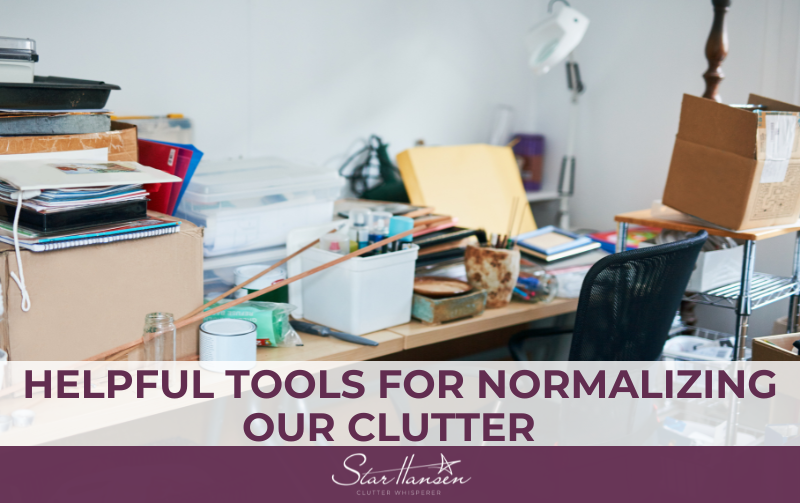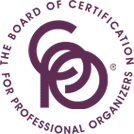Helpful Tools for Normalizing Our Clutter
“I think it’s probably the worst you’ve ever seen,” Ada said while digging through the boxes of paper in her storage unit.
Joy said, “I keep watching Hoarders. It’s a strange compulsion. Like I’m either trying to convince myself that my clutter isn’t that bad…or trying to figure out if I may actually be hoarding. It’s kind of scary.”
“My clutter is SO bad!” Christine said, in response to my Tiktok video about scary clutter.
When it comes to our own stuff, we can easily feel like our clutter is the absolute worst. I think this happens for a few reasons.
First, it’s hard to have perspective on our own clutter because we rarely show each other our raw, unedited clutter. We clean before the company comes over, and rarely post images online unless we’ve made sure our spaces are photo-ready.
It’s easy to think that other people’s clean homes are their true state…all while we experience our own homes in states of varying degrees of clutter.
Secondly, our clutter is just that, our clutter. Because it’s our stuff, it’s easy to feel the emotional charge that is naturally built into our cluttered stuff… The fear about potential bills coming in the mail. Shame over not returning the book we borrowed years ago. Hopelessness at all the unsuccessful organizing attempts over the years.
Clutter speaks and it can be painful to listen to our own stacks and piles.
Without perspective, it’s easy to think that our clutter is the worst. But that’s rarely the case at all. So, how do we start to understand clutter’s impact on our lives?
Thankfully, several organizations are on a mission to help destigmatize clutter. They’ve created some powerful tools for helping us to shift our perspective on clutter.
I want to share them with you so you can (hopefully) start to normalize the clutter in your life.
Here are a few clutter resources that can help you to have some good insight into your clutter:
This tool showcases photos of rooms in various stages of clutter—from clutter-free to severely cluttered. Created by the International OCD Foundation, this image-based scale helps you get perspective on your clutter. You can use these images to identify where your clutter falls along the scale. Or you can use it as a tool for setting goals about what you want your home to look like (without the high-level Pinterest/Instagram pressure).
Designed by the Institute for Challenging Disorganization, the Clutter Quality of Life Scale has been designed to help you assess the impact clutter has on your well-being.
The Institute for Challenging Disorganization developed this scale to serve as an observational tool for the assessment of clutter in residential environments. It offers five levels to indicate the degree of household clutter and/or hoarding one may be experiencing.
Clutter has been weaponized so much in our society. Between dramatic TV shows, showcasing intensely painful or challenging clutter to shame-inducing before/after pics on social media, it’s easy to get caught up in the clutter-shame spiral.
But shame never helped anyone to heal, transform, or elevate in their lives.
A little insight goes a long way. Use these resources to start to better understand the clutter in your life.
If you feel like sharing what you learned, comment below and let me know the biggest takeaway you got. I would love to cheer you on in your clutter journey.





